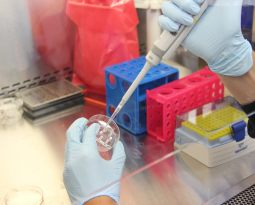Ohio Patent of the Month – January 2021
Human-computer interactions are evolving constantly, spanning fields from motion capture technology to clinical analyses. Unfortunately, limitations in computer vision are widespread. The current inability for computer vision to recognize human positioning prevents higher level functioning. For instance, currently in motion capture, an actor is outfitted with numerous markers. The computer recognizes these markers and is able to build CGI using the marker movements. If the computer was able to view and recognize human positioning, these markers would be unnecessary. Bertec Corporation has been developing a system to estimate a person’s 3D pose.
Their system incorporates a camera to capture images combined with a data processor. The data processor will receive images and extract features which provide input to a convolutional neural network (CNN). The CNN estimates joint position (e.g. elbow, knee) to build a framework for the pose structure. These networks will then generate 2D heatmaps which, combined with epipolar geometry, will produce a 3D pose of the person. As 3D poses are generated, they are used to train a 3D pose estimator for future references. The accuracy of these poses can be critical for a computer’s higher level reasoning. Typical pose estimations track accuracy at each joint independently but fail to consider the pose in its entirety. Bertec was aware that joint positioning can be the same while the pose varies and so they developed their own accuracy score to consider the pose as one structure.
This unique pose estimation and measurement method could produce more accurate 3D pose estimation and improve computer vision. Improving computer vision will help advance our human-computer interactions in fields like robotics, augmented reality, and animation.
Are you adapting existing technology for a new application? Did you know your development work could be eligible for the R&D Tax Credit and you can receive up to 14% back on your expenses? Even if your development isn’t successful your work may still qualify for R&D credits (i.e. you don’t need to have a patent to qualify). To find out more, please contact a Swanson Reed R&D Specialist today or check out our free online eligibility test.
Who We Are:
Swanson Reed is one of the U.S.’ largest Specialist R&D tax advisory firms. We manage all facets of the R&D tax credit program, from claim preparation and audit compliance to claim disputes.

















